Rolled metal roofing has become a dominant choice in both residential and commercial construction due to its durability, cost-effectiveness, and aesthetic appeal. But what exactly is rolled metal roofing, and why is it so popular? Whether you’re a seasoned contractor or a DIY enthusiast, this comprehensive guide will provide you with an in-depth understanding of the various aspects of rolled metal roofing, including different types, their applications, advantages, working processes, and much more. Let’s dive right in!
Overview
Rolled metal roofing is a type of metal sheet roofing material that is produced by rolling large sheets of metal into a coil. The metal can then be further processed, pressed, and cut into specific dimensions. This type of roofing is highly versatile, providing excellent protection against weather, corrosion, and environmental factors, while also being lightweight, cost-effective, and relatively easy to install.
Unlike traditional roofing systems like shingles or tiles, rolled metal roofing provides a sleek, modern look, while its continuous surface helps in reducing potential leak points. There are various types of metal materials used in rolled roofing, including galvanized steel, aluminum, copper, and more.
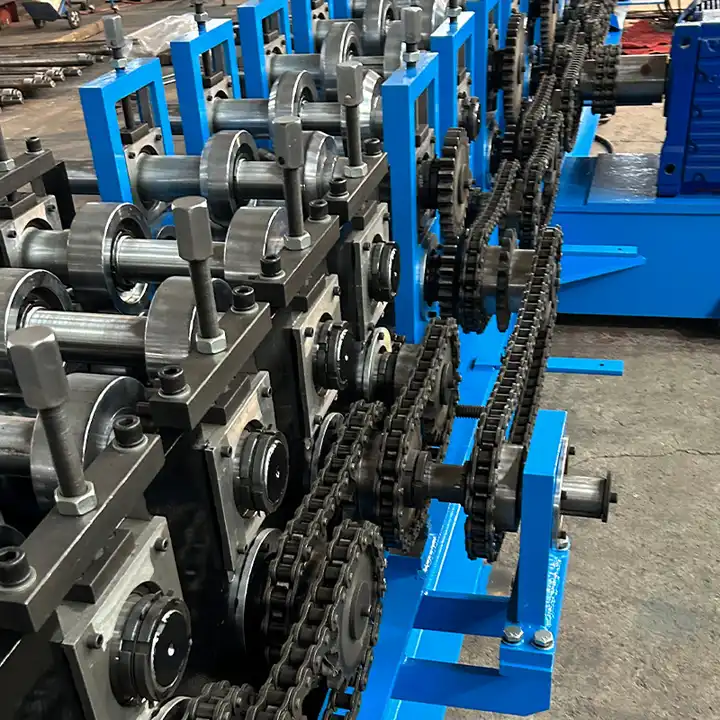
Corrugated Iron Sheets: The Classic Option
Corrugated iron sheets are perhaps one of the most common forms of rolled metal roofing. These sheets have a unique wavy pattern, which adds to their structural strength while providing efficient water drainage. They’ve been a staple in construction for over a century, primarily used for industrial, agricultural, and rural applications. Corrugated iron sheets have evolved over the years, now offering better resistance to rust and improved aesthetics.
The key benefits include:
- Enhanced strength: The corrugated design adds rigidity and can withstand heavy loads.
- Water drainage: The ridges ensure that rainwater flows off quickly, reducing the risk of water damage.
- Cost-effectiveness: Typically more affordable than flat sheets due to easier manufacturing.
Types of Rolled Metal Roofing
There’s a broad range of metal materials used in rolled metal roofing, each with its own strengths, weaknesses, and best-use cases. Here’s a breakdown of the most common types:
| Type of Metal | Material Characteristics | Typical Applications | Price Range |
|---|---|---|---|
| Galvanized Steel | Coated with a protective layer of zinc, resistant to corrosion, affordable. | Industrial buildings, barns, warehouses. | $1.80 – $3.50 per square foot |
| Aluminum | Lightweight, naturally corrosion-resistant, long-lasting, and energy-efficient. | Coastal homes, residential buildings, energy-conscious projects. | $2.50 – $5.00 per square foot |
| Copper | Beautiful aging process (patina), highly durable, and naturally resistant to corrosion, but quite expensive. | Luxury residential, historic restorations, architectural buildings. | $7.00 – $12.00 per square foot |
| Stainless Steel | Highly resistant to rust, corrosion, and extreme weather conditions. Perfect for locations with harsh environmental elements. | High-end residential, commercial applications in extreme climates. | $3.50 – $6.00 per square foot |
| Zinc | Low maintenance, self-healing properties, long lifespan (up to 100 years). | Green buildings, environmentally friendly projects, modern architecture. | $6.00 – $10.00 per square foot |
| Tin | Old-fashioned metal roofing option, traditionally used in agricultural settings. Cheaper and requires regular maintenance to prevent rust. | Farmhouses, sheds, rural buildings. | $1.50 – $3.00 per square foot |
| Galvalume Steel | A mix of aluminum and zinc coating, offering enhanced corrosion resistance compared to galvanized steel, but not as durable as aluminum alone. | Residential homes, industrial buildings. | $2.50 – $5.00 per square foot |
| Stone-Coated Steel | Aesthetic option combining the durability of metal with the look of traditional tiles or shingles. Offers better soundproofing. | High-end residential, commercial buildings. | $3.50 – $6.00 per square foot |
| Lead | Extremely durable, very heavy, and corrosion-resistant, but prone to being soft and easily damaged by heavy winds or hail. | Churches, historic buildings, high-end residential. | $8.00 – $12.00 per square foot |
| Titanium Alloy | Lightweight, corrosion-resistant, and high strength-to-weight ratio. Generally used for high-end or specialized applications. | Architectural projects, luxury residential. | $12.00 – $25.00 per square foot |
The Working Process of Rolled Metal Roofing
The manufacturing process of rolled metal roofing is an intricate one, involving several steps. From raw material processing to the final rolled product, each stage ensures the roofing panels are durable, resilient, and ready for installation.
- Material Selection: Raw metal materials (aluminum, steel, zinc, etc.) are selected based on the intended application of the roofing.
- Rolling: The metal is passed through large rollers, shaping it into flat sheets or specific profiles (corrugated, ribbed, etc.).
- Coating: To protect the metal from corrosion, the sheets are often galvanized or coated with a protective layer (zinc, aluminum, or polymer).
- কাটিং: The rolled metal is then cut to specific lengths depending on the desired roof size.
- Profiling: Some roofing materials undergo additional processes, like corrugation or stamping, to enhance strength and structural integrity.
-
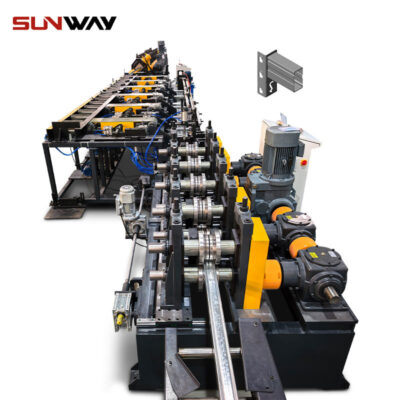 Storage Rack Shelf Box Panel Making Machine Steel Storage Rack System Box Beam Roll Forming Line
Storage Rack Shelf Box Panel Making Machine Steel Storage Rack System Box Beam Roll Forming Line -
 দ্রাক্ষাক্ষেত্র পোস্ট রোল ফর্মিং মেশিন
দ্রাক্ষাক্ষেত্র পোস্ট রোল ফর্মিং মেশিন -
 স্বয়ংক্রিয় আকার পরিবর্তনযোগ্য সিগমা Purlin রোল ফর্মিং মেশিন
স্বয়ংক্রিয় আকার পরিবর্তনযোগ্য সিগমা Purlin রোল ফর্মিং মেশিন -
 স্বয়ংক্রিয় আকার পরিবর্তনযোগ্য CZ Purlin রোল ফর্মিং মেশিন
স্বয়ংক্রিয় আকার পরিবর্তনযোগ্য CZ Purlin রোল ফর্মিং মেশিন -
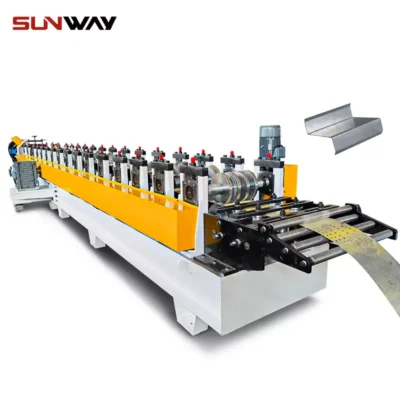 স্বয়ংক্রিয় আকার পরিবর্তনযোগ্য Z Purlin রোল তৈরির মেশিন
স্বয়ংক্রিয় আকার পরিবর্তনযোগ্য Z Purlin রোল তৈরির মেশিন -
 অটো সাইজ চেঞ্জেবল সি ইউ পারলিন রোল ফর্মিং মেশিন
অটো সাইজ চেঞ্জেবল সি ইউ পারলিন রোল ফর্মিং মেশিন -
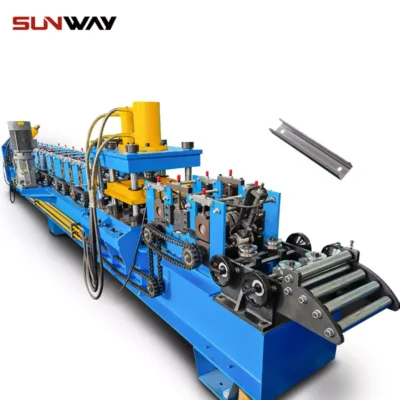 সি সেকশন ব্রেসিং ওমেগা স্টোরেজ র্যাক খাড়া পোস্ট রোল ফর্মিং মেশিন
সি সেকশন ব্রেসিং ওমেগা স্টোরেজ র্যাক খাড়া পোস্ট রোল ফর্মিং মেশিন -
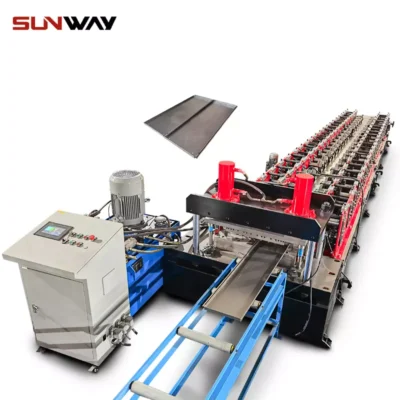 স্টিল বক্স প্লেট মেকিং রোল ফর্মিং মেশিন
স্টিল বক্স প্লেট মেকিং রোল ফর্মিং মেশিন -
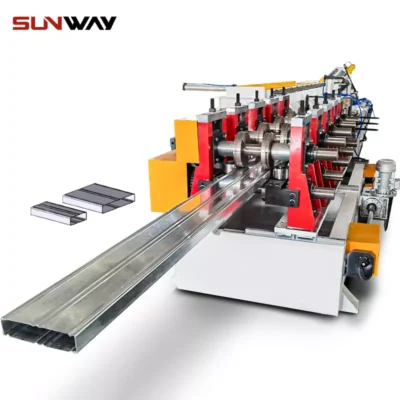 বক্স মরীচি স্টীল রোল শেল্ফ কলাম জন্য মেশিন গঠন
বক্স মরীচি স্টীল রোল শেল্ফ কলাম জন্য মেশিন গঠন
Key Components and Their Functions
| Component | Function |
|---|---|
| Roofing Panel | The main material that forms the protective layer over the building. Provides protection from the elements (rain, wind, UV rays). |
| Underlayment | A waterproof layer installed beneath the metal roof to provide additional protection against moisture. |
| Fasteners | Screws, nails, or clips used to secure the roofing panels to the substructure. Fasteners must be rust-resistant to maintain the roof’s longevity. |
| Flashing | Metal sheets installed around roof features like chimneys, vents, or skylights to prevent water infiltration. |
| Ridge Caps | A specially designed cap that covers the ridge (the highest point where two roof planes meet). |
| Gutters and Downspouts | Direct rainwater away from the building to protect the foundation and prevent erosion. |
| Ventilation Systems | Metal roofs often incorporate ventilation systems to allow air circulation, preventing moisture buildup and improving energy efficiency. |
| Sealants | Used around seams, joints, and penetrations to ensure a waterproof seal and prevent leaks. |
Efficiency and Performance of Rolled Metal Roofing Machines
The efficiency of metal roofing machines is key to understanding how quickly and effectively large-scale roofing projects can be completed. Here’s an overview of the key machine performance indicators:
| Machine | Speed (m/min) | দক্ষতা |
|---|---|---|
| রোল ফর্মিং মেশিন | 10-30 m/min | Provides continuous sheet formation with high precision, reducing the need for manual shaping. |
| Pressing Machine | 20-50 m/min | Used to create specific patterns (corrugated, ribbed) with uniform thickness and pattern alignment. |
| Cutting Machine | 30-100 cuts/min | Enables fast and accurate cutting of sheets into specified lengths. |
| Galvanizing Machine | Up to 60 m/min | Coats the metal with zinc or aluminum, protecting against corrosion. |
Customized Mechanical Parameters for Rolled Metal Roofing
Customizing metal roofing to match the needs of your project is key to achieving the best results. Here are some common parameters that can be adjusted:
| Parameter | Customizable Range |
|---|---|
| পুরুত্ব | 0.2mm – 1.2mm |
| Width | 600mm – 1200mm |
| Length | 2000mm – 6000mm |
| Corrugation Depth | 15mm – 50mm |
| Material Grade | Galvanized Steel (G60 – G90), Aluminum (3003, 5052), Stainless Steel (304, 316). |
| Coating | Zinc, Aluminum-Zinc, Powder-coated finishes for enhanced protection. |
Applications of Rolled Metal Roofing
Rolled metal roofing is incredibly versatile and can be used in various sectors. Here’s where you’ll typically find these materials being utilized:
| Application Area | বর্ণনা |
|---|---|
| Residential Homes | Rolled metal roofing is becoming more common in modern homes due to its sleek appearance and energy efficiency. |
| বাণিজ্যিক ভবনসমূহ | From warehouses to office buildings, the durability and low maintenance make it an ideal choice for commercial use. |
| কৃষি কাঠামো | Corrugated metal sheets are often used on barns and storage buildings due to their low cost and long lifespan. |
| Architectural Projects | Copper, zinc, and titanium alloy roofs are commonly used in high-end architectural designs. |
| শিল্প প্রয়োগ | Factories and industrial facilities use metal roofing for its durability and protection against harsh environmental conditions. |
Installation, Operation, and Maintenance of Rolled Metal Roofing
Proper installation, operation, and maintenance are key to maximizing the lifespan of your rolled metal roof. Here’s an overview of best practices:
| শ্রেণী | বিস্তারিত |
|---|---|
| Installation | Ensure proper alignment of panels, secure fasteners, and incorporate underlayment for added moisture protection. |
| পরিচালনা | Regularly inspect for loose screws, damaged panels, and worn sealants to prevent potential leaks or structural issues. |
| Maintenance | Clean gutters and downspouts, apply protective coatings as necessary, and conduct annual inspections to detect early signs of wear. |
Key Suppliers and Price Range of Rolled Metal Roofing
Finding the right supplier can be challenging, but here’s a list of popular suppliers and their approximate price ranges:
| Supplier | Price Range (per sq. ft.) | Location |
|---|---|---|
| ABC Metal Roofing | $2.00 – $5.00 | Nationwide (USA) |
| McElroy Metal | $2.50 – $6.00 | Nationwide (USA) |
| Fabral | $2.00 – $4.50 | Nationwide (USA) |
| BlueScope Steel | $2.00 – $5.50 | Australia, International |
| Kingspan Group | $3.00 – $7.00 | Global |
| Ruukki | $3.00 – $6.50 | Europe, International |
How to Choose the Right Supplier for Rolled Metal Roofing
Selecting the right supplier can make all the difference in the quality and longevity of your rolled metal roofing. Here’s what you should consider:
| কারণ | What to Look For |
|---|---|
| Material Quality | Look for suppliers that provide warranties and specify the metal grade and coating used in their products. |
| Pricing | Compare the price per square foot across suppliers, but don’t compromise quality for a lower price. |
| Customer Reviews | Always check online reviews to see how satisfied past customers are with the product and service. |
| Delivery and Logistics | Make sure the supplier can deliver to your location within your required timeline. |
| কাস্টমাইজেশন অপশন | If your project requires specific panel dimensions or material types, ensure the supplier can accommodate custom orders. |
Advantages vs. Disadvantages of Rolled Metal Roofing
Rolled metal roofing has numerous advantages, but like any building material, it also comes with some drawbacks. Here’s a comparison to help you decide if it’s the right fit for your project:
| Advantages | Disadvantages |
|---|---|
| স্থায়িত্ব | Can last up to 50 years or more with proper maintenance. |
| কম রক্ষণাবেক্ষণ | Requires minimal upkeep, especially if corrosion-resistant coatings are applied. |
| Energy Efficient | Reflects sunlight, keeping homes cooler and reducing energy costs. |
| Fire Resistance | Metal roofs are non-combustible, providing an additional layer of fire safety. |
| Environmental Impact | Made from recyclable materials, and at the end of their life, they can be fully recycled. |
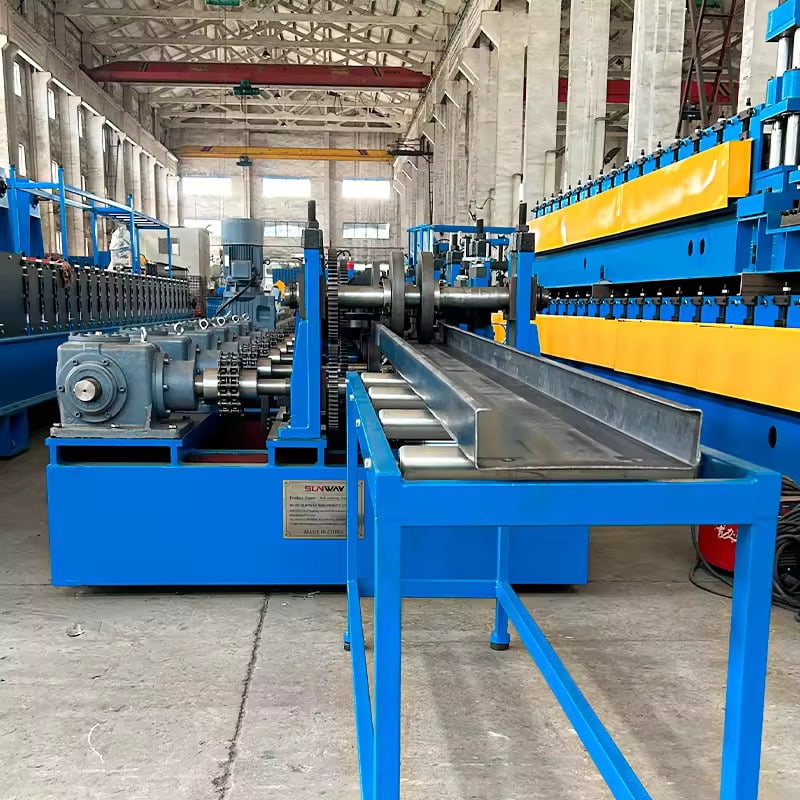
FAQ
| Question | Answer |
|---|---|
| How long does rolled metal roofing last? | Rolled metal roofing can last anywhere from 40 to 70 years depending on the material, installation, and maintenance. |
| Is metal roofing energy efficient? | Yes, metal roofing reflects solar radiant heat, which can reduce cooling costs by up to 25%. |
| Can I install rolled metal roofing myself? | While possible, it’s recommended to hire a professional installer, especially for large or complex roofing structures. |
| Does metal roofing require an underlayment? | Yes, it’s generally recommended to install an underlayment for additional moisture protection and energy efficiency. |
| Can metal roofing be painted? | Yes, metal roofs can be painted with special metal roof paint that adds protection and enhances aesthetics. |
By understanding the details of rolled metal roofing, including its types, manufacturing process, advantages, and maintenance, you can make an informed decision about whether this material is right for your project. Whether you’re drawn to the durability of galvanized steel, the lightweight nature of aluminum, or the rustic appeal of copper, rolled metal roofing offers a wealth of options to suit your needs.
Frequently Asked Questions (FAQ)
1) What is the difference between rolled metal roofing and standing seam panels?
- Rolled metal roofing refers to coil-based sheet products formed into profiles (corrugated, ribbed, standing seam). Standing seam is a premium profile with concealed fasteners and raised vertical seams; corrugated/ribbed typically use exposed fasteners and are more budget-friendly.
2) Which metal grade and coating should I choose for coastal projects?
- Aluminum (3004/3105) or Galvalume (AZ50–AZ55) with marine-grade PVDF paint is recommended. For severe salt spray zones within 1–3 miles of the shoreline, avoid bare galvanized and specify stainless accents for flashings/fasteners.
3) How thick should rolled metal roofing be for residential vs. commercial roofs?
- Common residential thickness: 0.4–0.7 mm (26–24 ga). Light commercial/industrial: 0.6–0.9 mm (24–22 ga). Heavier gauges improve wind uplift resistance and dent resistance but increase cost and weight.
4) Are rolled metal roofs compatible with solar panels?
- Yes. Use clamp-on attachments for standing seam or flashed standoffs for exposed-fastener profiles. Verify load and pull-out data, maintain drainage paths, and follow manufacturer guidance to keep warranties valid.
5) How do I reduce noise (rain/hail) on metal roofs?
- Install solid decking with high-density underlayment or acoustic membrane, use attic insulation, and choose stone-coated steel or profiles with deeper ribs. Proper fastening and venting also reduce drumming.
2025 Industry Trends
- Energy codes: Wider adoption of cool roof requirements and reflectance/thermal emittance labeling (CRRC, Title 24-like codes in more states/regions).
- PV-integrated design: Growth of rail-less solar mounting on standing seam and factory-formed wire chases.
- Durability shift: Increased use of PVDF paints and high-recycled-content aluminum/steel to meet embodied-carbon targets (LEED v5, EPD-based procurement).
- Insurance-driven specs: Stricter hail and wind ratings (FM 4473 Class 4, UL 2218 Class 4, UL 580/1897) for high-risk regions.
- Supply resilience: More regional coil coating capacity to reduce lead times and price volatility.
Key 2023–2025 benchmarks for Rolled Metal Roofing
| Metric | 2023 | 2024 | 2025 (est.) | Notes/Sources |
|---|---|---|---|---|
| Avg. installed cost (USD/sq ft, residential corrugated) | 6.0–9.0 | 6.5–9.5 | 6.8–10.2 | Contractor surveys; RSMeans |
| Share of PVDF-coated panels (%) | 38 | 42 | 48 | Coil coaters’ disclosures; industry reports |
| Cool roof (CRRC-listed) share of residential metal (%) | 46 | 52 | 58 | CRRC directory trends |
| Projects specifying Environmental Product Declarations (%) | 22 | 28 | 35 | LEED v5 pilot, public procurement |
| Standing seam market share within metal roofing (%) | 34 | 36 | 38 | Manufacturer shipment mixes |
| Typical warranty (finish/perforation, years) | 25–35 / 30–45 | 30–40 / 35–50 | 35–40 / 40–50 | OEM warranty sheets |
Selected references:
- Cool Roof Rating Council (CRRC): https://coolroofs.org
- UL Standards (580/1897/2218): https://www.ul.com
- FM Approvals 4473 (hail): https://www.fmglobal.com
- U.S. DOE Building Energy Codes: https://www.energycodes.gov
- U.S. Green Building Council (LEED): https://www.usgbc.org
Latest Research Cases
Case Study 1: PV-Ready Standing Seam Retrofit on Coastal School (2025)
- Background: A school district sought lower operating costs and resilient roofing near a marine environment.
- Solution: Specified aluminum standing seam (3105 H26) with PVDF coating, clamp-on solar attachments (no penetrations), and CRRC-listed cool color.
- Results: Modeled HVAC savings 9–14% annually; 413 kW PV system installed with zero roof penetrations; finish warranty 35 years; no corrosion findings at 12-month inspection. Sources: District facilities report; installer QA records.
Case Study 2: Hail-Resistant Corrugated Steel for Distribution Center (2024)
- Background: Facility in hail-prone region experienced repeated membrane roof damage.
- Solution: Upgraded to 24 ga Galvalume corrugated panels, Class 4 impact-rated, with dense board underlayment for acoustic control.
- Results: Insurance premium reduction 6.8%; post-storm assessment after 1.25” hail showed no panel breaches; interior noise during storms reduced by ~3–5 dBA. Sources: Insurer rider; third-party post-event inspection.
Expert Opinions
- Todd Miller, President, Isaiah Industries
- “For long-term value, PVDF finishes on aluminum or Galvalume outperform budget paints, especially under UV and coastal exposure.”
- Jennifer Keegan, Director of Building Sciences, GAF
- “Details make or break performance: underlayment choice, fastener corrosion class, and venting strategy drive durability and occupant comfort.”
- Dr. Roland Geyer, Professor of Industrial Ecology, UCSB
- “Specifying EPD-backed coils with high recycled content provides immediate embodied-carbon reductions without sacrificing performance.”
Practical Tools/Resources
- CRRC Rated Products Directory (reflectance/emittance): https://coolroofs.org/directory
- Metal Construction Association technical resources: https://www.metalconstruction.org
- NRCA Metal Roof Systems Manual: https://www.nrca.net
- ASCE 7 wind/snow load guidance: https://www.asce.org
- PV mounting data for standing seam (S-5! load tables): https://s-5.com
- Cost and spec benchmarking (RSMeans): https://www.rsmeans.com
- UL Online Certifications Directory (impact/wind ratings): https://iq.ulprospector.com
Implementation checklist for rolled metal roofing
- Verify substrate and deck fastening meet ASCE 7 loads before panel selection.
- Match metal grade/coating to environment (coastal, industrial, high UV).
- Use compatible fasteners/flashings (stainless or coated) to avoid galvanic corrosion.
- Specify cool-roof colors with documented solar reflectance and emissivity.
- For solar, use engineered clamp systems or flashed standoffs; maintain drainage.
- Document maintenance: biannual inspections, fastener re-torque, sealant review, debris clearing.
Procurement tips
- Request coil certs (grade, thickness, coating weight), paint system data sheets, and EPDs.
- Require impact/wind test evidence (UL 2218, UL 580/1897, FM 4473) matching your zone.
- Compare warranties beyond years: chalk/fade limits, perforation coverage, coastal exclusions.
- Confirm lead times and regional coil-coater capacity to avoid schedule risk.
Last updated: 2025-10-28
Changelog: Added 5 new FAQs; created 2025 trends with benchmarking table and sources; included two recent case studies; added expert opinions; provided tools/resources plus implementation and procurement checklists specific to rolled metal roofing
Next review date & triggers: 2026-05-31 or earlier if CRRC/energy codes change, UL/FM impact or wind standards update, or major price swings (>10%) in steel/aluminum coil markets
